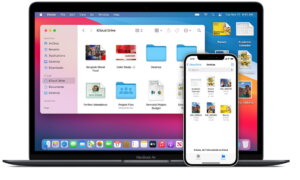One of the most appreciated features in premium headsets like Oculus Rift or HTC Vive is positional tracking. This helps you move laterally and vertically inside a virtual reality world as opposed to the limited experience mobile VR gears enable. But this is changing with the unveiling of Occipital Bridge for iPhone #realitymagic
Occipital Bridge headset brings positional tracking to iPhone 6, 6s and 7 through its own, special Structure Sensor. This does depth mapping of objects that surround you from 1 1/2 feet to 11 feet. Unlike other devices that require external cameras and beacons, Occipital Bridge relies on this one sensor to take care of everything without draining your battery. It comes with its own pack for 3-4 hours of play/one charge.
As on any other mobile VR headset, the iPhone locks in the front of the VR headset. Occipital Bridge looks like something a Stormtrooper would wear, given the b&w design and size – pretty bulky, if you ask me.
Occipital Bridge comes with a sidekick called Bridget that helps you poke around real-virtual worlds by creating portals. The big drawback is resolution; it offers only 640×480 per eye which pretty much sucks.
At least the price makes up for it – the Developer Edition headsetis shipping for $500/unit while customers will be able to get it for $400. Its success will depend on the content available for iOS, with developers invited to create new and fresh experiences using the Unity plugin and Bridge Engine SDK.
Follow TechTheLead on Google News to get the news first.























